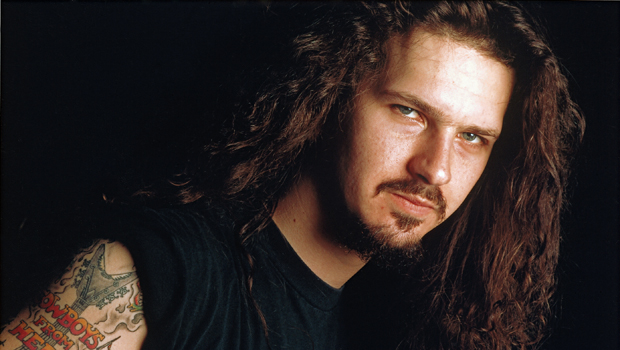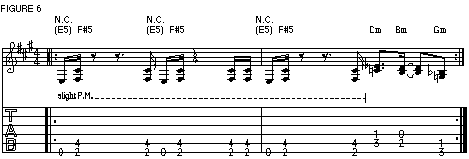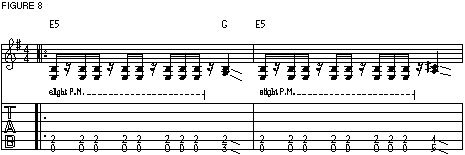Dimebag Darrell Lesson: A Vulgar Display of Power Chords
Dimebag Darrell dishes on some tricky-sounding diads in this classic GW lesson.

This entry comes from Dimebag Darrell's classic Guitar World column, "Riffer Madness."
Last time we scoped out the diminished-sounding root/flat-fifth chord shape (FIGURE 1), a tension-building power chord I use in the intro to "Rise" [Vulgar Display of Power].
This time around we're gonna get into some more tricky-sounding diads. (A diad is a two note chord: a power chord that can add extra color and dimension to your rhythm playing.)
The most common power chord in metal is the root/fifth, but root/third diads are also worth checking out.
There are two kinds of root/third power chords-major and minor-and both sound cool with a ton of gain. FIGURE 2 is a fretboard diagram of a moveable root/major-third shape, with the root note on the low-E string, while FIGURE 3 illustrates one with the root note on the A string.
FIGURES 4 and 5 show the same thing, but with the root/minor third diad. I've been into these tow power chords for a while. One day I was dicking around, playing some single note shit, and I decided to see what it would sound like if I played harmony with myself by adding a third to each note on the next higher string. Which One's Best When?

I don't follow any rules when it comes to using these diads; I just go with the one that sounds best. It's always worth spending that extra second to see if the minor third sounds better than the major third, or just go diminished (as in FIGURE 1) and really stretch shit out! For the demonic stuff the minor wins almost every time, but I always run through all my options first before going with it. Sometimes its it's cool to play major third and minor third diads back-to-back, or a minor third followed by a root/fifth diad—whatever combo sounds good. Like I've told you several times before, don't be afraid to experiment and listen! CHECK SHIT OUT!
To give you an idea of how cool these diads can be, let's get into a couple of riffs that use 'em. FIGURE 6 is similar to the chorus of "This Love" [Vulgar Display of Power] and uses the minor-third shape. Compare it to FIGURE 7 which is the exact same riff but is played using root/fifth power chords in place of the minor third ones. FIGURE 6 sounds a lot darker and menacing.
FIGURE 8 brings to mind the riff from the beginning of "Regular People (Conceit)" [Vulgar Display of Power] and mixes up regular root/fifth power chords with the major diad shape shown in FIGURE 2.



Check some of these shapes out in your own shit and see what happens. You never know, a major or minor power chord here and there might make a riff more trick'd. So, what the hell, take a wing at it. It's all good, it's a greaz'd wheel. Gotta book. LATA!
Get The Pick Newsletter
All the latest guitar news, interviews, lessons, reviews, deals and more, direct to your inbox!







![Joe Bonamassa [left] wears a deep blue suit and polka-dotted shirt and plays his green refin Strat; the late Irish blues legend Rory Gallagher [right] screams and inflicts some punishment on his heavily worn number one Stratocaster.](https://cdn.mos.cms.futurecdn.net/cw28h7UBcTVfTLs7p7eiLe.jpg)


